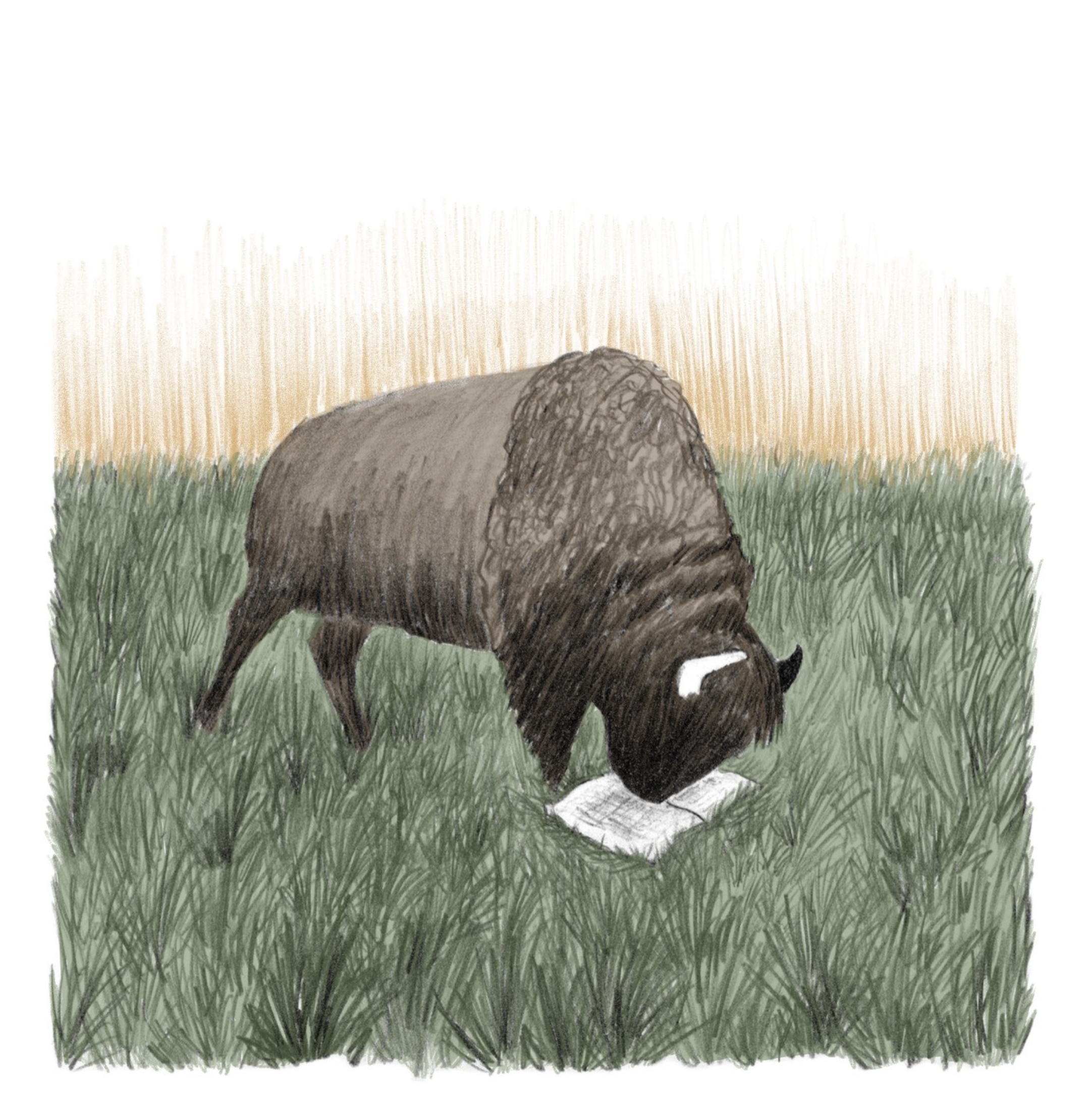Nhatt Nichols

Nhatt Nichols is a graphic journalist and cartoonist. She received a CAF grant for “The Bison of Białowieża Forest.” European bison have faced extermination for 300 years and have survived due to conservation from the humans that threaten them. European bison primarily live in Poland’s Białowieża Forest, the largest primeval forest in Europe. Their population was reduced to only nine during World War I, but a breeding program saved them from extinction. Their offspring now roam in Białowieża and are again threatened by humanity. Nhatt writes of her project:
By laying out the historical success and failures in human–bison relationships and speaking with people focused on their future, I’ll be able to create a hopeful road map for animal activists in other places who are worrying about similar crises.
Nhatt went to Poland to meet the activists working to protect them and the forest, to create a series of narrative paintings for the Columbia Pacific Heritage Museum, and a book of graphic journalism. She wrote that meeting researchers and activists working in Białowieża gave her information and connections she’d never have made over the Internet.
I also gathered dozens of field drawings and hundreds of reference photos. What I found in the forest is a very complex story about the preservation and values of both human and animal life. I spoke with a forest historian who broke down the pre-WW1 history of the forest, and of how bison were preserved for their value to hunters, at the expense of predators like wolves and bears, which were considered competition. Both wars brought incredible devastation to human and animal life, but in the post-war years, a concerted effort has been made to preserve and restore the forest. The forest is now protected against logging, providing a space for invaluable research for the Geobotanical Station (a research center for the University of Warsaw) and the Mammal Institute. Animals in the protected area are not hunted, and while I was there, I saw bison, red deer, many of the nine species of woodpecker, and a fantastic variety of frogs and beetles.
But the political realities facing that part of the world at this time couldn’t be avoided.
[In 2021], the Polish government decided to build a wall along its border with Belarus to stop refugees from coming across the border and declaring asylum. The border wall runs through the UNESCO-protected forest; no environmental impact surveys were done; and ecologists from the Geobotanical Station and the Mammal Institute were denied access to the zone around the border wall. They have been able to access the forest road used for the wall’s construction. While walking it with Dr. Kasia Nowak, I saw over a hundred damaged trees, and a formerly quiet throughway for animals turned into a road filled with amphibian and beetle roadkill. The wall also prevents predators like wolves and lynxes from crossing safely to the Belarussian side, where half of their population lives. The Mammal Institute is incredibly concerned for the future of the lynx, which already has a small gene pool to draw from.
Instructively, the wall proved inadequate in keeping people out.
The wall hasn’t stopped refugees; it’s just made crossing more dangerous. Local people have been supporting refugees by bringing them dry clothing, food, and tarps to shelter under while they find a way to declare asylum safely. I went with a group into the woods and met with two Syrian men who had been in the forest for five days. They had trench foot and only a small backpack of supplies. After I helped them with supplies, they told me about their experiences with animals in the woods and asked if we could take a selfie together to send back to their parents. They wanted to prove to their family that there are still good people in the world.
In her report in January 2023, Nhatt said that, in addition to posting about her project on social media and in her newsletter, she had written her book proposal and had begun work on her museum show and graphic novel.


